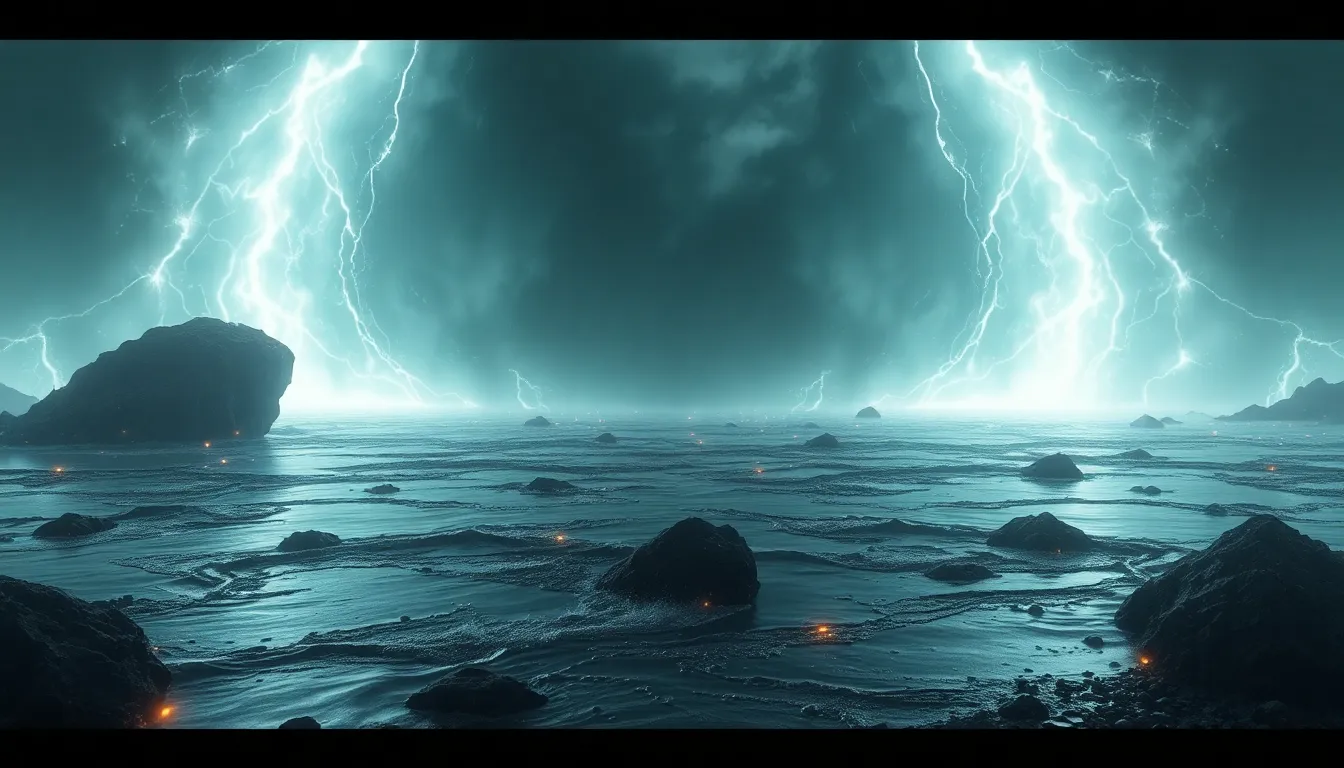The Role of Technology in Understanding Flood Myths: A Modern Perspective
I. Introduction
Flood myths are narratives present in various cultures around the world, telling stories of great deluges that often serve as a metaphor for moral or spiritual cleansing. These myths typically revolve around a catastrophic flood that destroys civilization, with a chosen few surviving to repopulate the Earth. Examples include the biblical tale of Noah’s Ark, the Mesopotamian Epic of Gilgamesh, and various Hindu texts.
Studying flood myths is crucial because they provide insights into the values, fears, and environmental experiences of different cultures across history. They often reflect humanity’s relationship with nature, as well as collective memory concerning disasters. In recent years, advancements in technology have transformed the study of mythology, enabling researchers to analyze these narratives in unprecedented ways.
II. Historical Context of Flood Myths
Flood myths appear in numerous cultures, often sharing common themes despite differing details. For instance:
- Noah’s Ark: In the Judeo-Christian tradition, Noah is instructed by God to build an ark to save his family and pairs of every animal species from a world-engulfing flood.
- Epic of Gilgamesh: This ancient Mesopotamian text features Utnapishtim, who builds a boat to survive a divine flood sent to wipe out humanity.
- Hindu Texts: In Hindu mythology, the Matsya Avatar tells of Vishnu saving the king Manu and various species from a great deluge.
These myths hold significant cultural value, often representing themes of rebirth, divine judgment, and the resilience of humanity. Traditionally, the study of these myths relied on oral traditions and archaeological findings. Scholars would analyze ancient texts and artifacts to unravel the narratives and their meanings.
III. Technological Advances in Archaeology
Technological innovations have revolutionized archaeology and the study of flood myths. Key advancements include:
- Satellite Imagery and Remote Sensing: These technologies allow researchers to detect ancient structures and landscapes that may have been influenced by historical floods.
- Ground-Penetrating Radar (GPR): GPR can reveal subsurface features without excavation, helping archaeologists locate remnants of ancient settlements that may have been affected by floods.
Case studies have showcased how technology has impacted the understanding of flood-related archaeological sites. For example, satellite imagery has been used to identify the remnants of ancient cities along the banks of rivers, providing context for the narratives found in flood myths.
IV. Digital Humanities and Mythology
The field of digital humanities merges traditional humanities scholarship with technology, enhancing the study of myths. Key aspects include:
- Digital Platforms: Online databases and digital archives make it easier for researchers to access and share mythological texts and interpretations.
- Virtual Reality: VR technology allows for immersive experiences that can bring mythological narratives to life, aiding in comprehension and engagement.
Examples of projects that have digitized and analyzed flood myths include collaborative databases that compile various cultural accounts of floods, enabling comparative studies and deeper insights.
V. Data Analysis and Modeling
The advent of big data has opened new avenues for understanding cultural narratives, including flood myths. Data analysis plays a crucial role in:
- Identifying Patterns: Researchers can analyze the frequency and aspects of flood myths across cultures to identify common themes and variations.
- Predictive Modeling: By examining historical data on floods and myths, researchers can potentially forecast future narratives and their cultural significance.
VI. Social Media and Public Engagement
Social media platforms have transformed the way flood myths are interpreted and shared. Key influences include:
- Dissemination of Information: Social media facilitates the rapid spread of mythological narratives, influencing public perceptions of natural disasters.
- Crowdsourcing Knowledge: Engaging communities through social media allows for collaborative exploration of myths, enriching the understanding of these narratives.
Case studies of viral myths, such as those that arise during natural disasters, highlight the impact of social media on public perception and awareness of flood myths.
VII. The Intersection of Science and Mythology
Scientific studies on floods often intersect with mythological narratives. This intersection can lead to fascinating insights:
- Scientific Research: Studies on past floods can provide evidence supporting or challenging the historical accuracy of flood myths.
- Bridging Gaps: Technology helps connect mythological narratives with scientific findings, fostering interdisciplinary research.
Examples of such research include geological studies that correlate flood events with ancient myths, contributing to a richer understanding of both disciplines.
VIII. The Role of Artificial Intelligence
Artificial Intelligence (AI) is increasingly being utilized in the study of ancient texts and oral histories related to flood myths. Key applications include:
- Text Analysis: AI can analyze large volumes of text for patterns, themes, and connections that may not be immediately apparent to human researchers.
- Machine Learning: AI models can categorize and interpret myths, offering new perspectives on their meanings and cultural significance.
However, ethical considerations arise when using AI for cultural studies, particularly regarding representation and interpretation of marginalized voices.
IX. Challenges and Limitations
Despite the benefits of technology in studying flood myths, several challenges and limitations persist:
- Reliance on Technology: Overreliance on technological tools may overshadow traditional scholarship and oral traditions.
- Cultural Biases: The digital divide and biases in technology can lead to misrepresentation of certain cultures and their narratives.
- Preservation of Oral Traditions: The shift to digital formats poses risks for the preservation of oral traditions that are vital for understanding myths.
X. Conclusion
In summary, technology has profoundly impacted our understanding of flood myths, providing new tools and methods for analysis and interpretation. As we look to the future, interdisciplinary research combining technology with traditional scholarship will be essential to deepen our understanding of these narratives. The challenge lies in balancing technological advancements with the preservation of cultural heritage, ensuring that the voices of all cultures are heard and respected.




